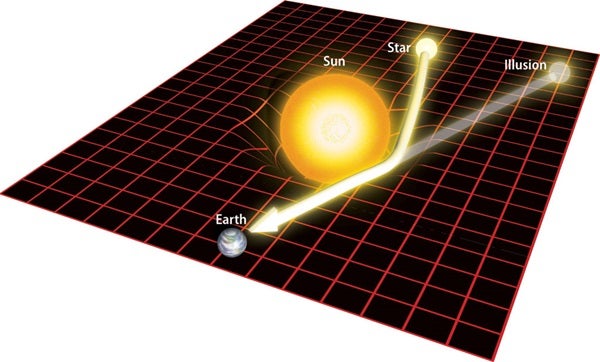According to general relativity, any object with mass warps space-time. (The common analogy is that it’s similar to a bowling ball on a trampoline.) So, any passing body will follow a curved trajectory; this is true whether the passing body is an orbiting satellite or a light photon from a background object.
Researchers involved with the 1919 eclipse expedition traveled to two locations to observe totality: northern Brazil and a western island of Africa. According to general relativity, the apparent positions of stars near the Sun would appear to shift by 1.75 arcseconds. The scientists first measured the positions of stars in the Hydra star cluster in early 1919. Eddington and colleagues then recorded the stars’ locations during totality, and compared them to the previous values. They found that indeed, the background stars appeared to shift by roughly the amount general relativity had predicted (they measured 1.98 arcseconds and 1.61 arcseconds).
The researchers published their data in November 1919, and Einstein quickly became a household name.










